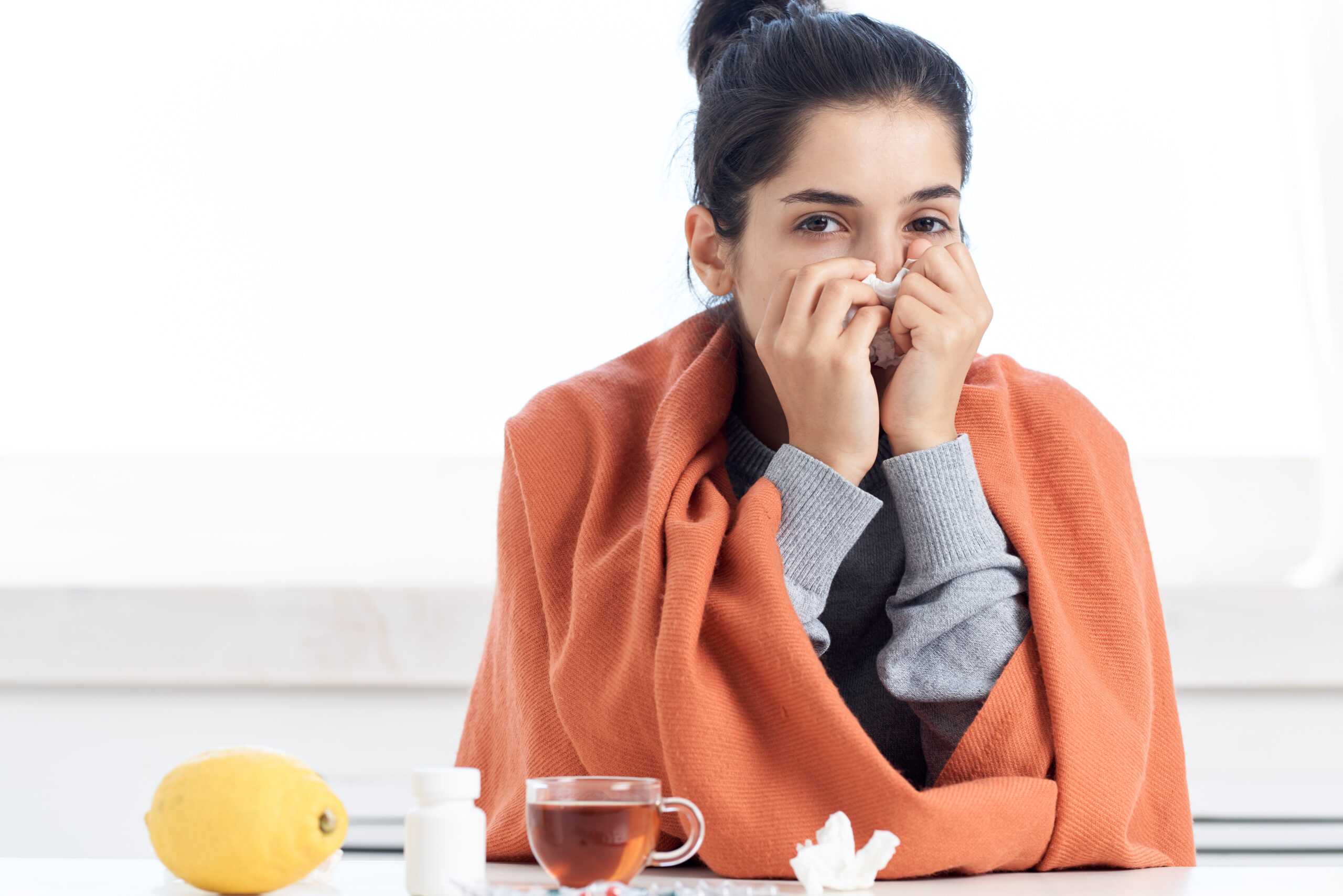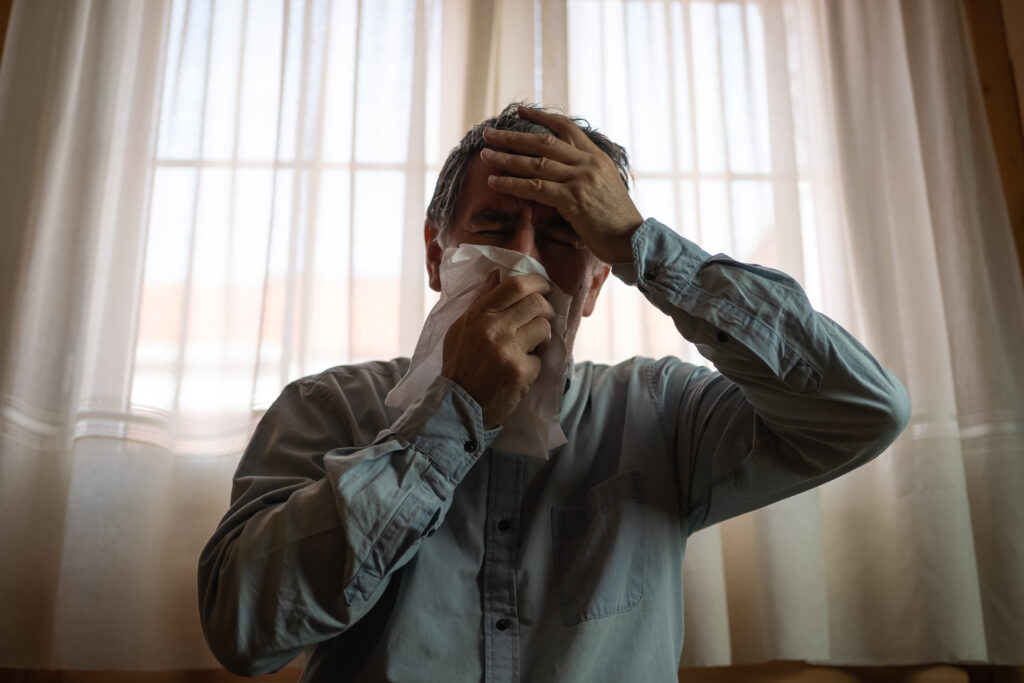Homoeopathy Helps to Cure Influenza/Flu

Influenza (flu) and the common cold are both contagious respiratory illnesses, but they are caused by
different viruses. Flu is caused by influenza viruses only, whereas the common cold can be caused by a
number of different viruses, including rhinoviruses, parainfluenza, and seasonal coronaviruses.
Illnesses like flu/influenza have their own impact on public health as it imposes threat for epidemic outbreaks,
which spreads rapidly and widely, affecting many individuals in a population, especially high-risk
individuals such as the elderly and pregnant women. Vaccines, anti-viral medications, and antibiotics are
the standard conventional treatments for these diseases. The use of homeopathy for epidemic diseases dates
to the time of Hahnemann, who recommended Belladonna for scarlet fever.
Interestingly homeopathy was invented in the same year as Jenner first practiced vaccination (1796).
Homeopathy first rose to prominence in the 19th century due to its success in treating epidemic diseases
such as cholera, yellow fever, and typhus. Various strategies have been used by homeopaths to treat
epidemic diseases, including individualization, combination remedies, and genus epidemics.
The flu pandemics in the 20th century caused considerably high mortality: the H1N1 Spanish flu (1918–
1919) claimed 50–100 million victims, the H2N2 Asian flu (1957) 1 million, and the H3N2 Hong Kong flu
(1968) around 700 thousand.
From the history of influenza epidemics and pandemics, it is apparent that outbreaks occur somewhere in
the world in most years.
As homeopathic treatment for individual persons based on the unique principle of individualization, Maste
Samuel Hahnemann has advised in his Organon of Medicine “§100, 101, 102” to observe carefully each
epidemic disease as a phenomenon of unique character’ that must be distinguished from the previous
outbreaks. To gather the picture of the disease, the ‘totality of characteristic signs and symptoms’, he
suggested observing several cases to formulate a ‘Genus epidemics (GE)’ for that particular epidemic.
Vaccines, anti-viral medications, and antibiotics have been the gold standard for conventional treatments.
Administration of the specific GE, derived after careful assessment of the characteristic picture of the
disease across regions, and treatment of symptomatic cases with adjuvant individualized Homoeopathy, can
be the most viable, safe, inexpensive, and effective approach to managing disease outbreaks globally

Mode of transmission
Cold or flu/influenza usually gets transmitted through droplet infection.
Clinical features and Complications
Influenza/ Flu can cause mild to severe symptoms. Flu usually has an abrupt onset of symptoms or with 1 or
2 days of the incubation period
Flu could have any of the following symptoms:
1. Fever or feverish feeling /chills
2. Cough, hoarseness, or sore throat
3. Shortness of breath or chest pain
4. Runny or stuffy nose
5. Sneezing
6. Earache
7. Muscle, body, or joint aches
8. Headaches
9. Fatigue (tiredness)
10. Loss of appetite
11. In some cases vomiting and diarrhea, which is more common in children than adults.
The symptomatology of influenza infections can however range from afebrile respiratory illnesses similar
to the common cold, to diseases in which systemic signs and symptoms predominate with relatively little
respiratory tract infection symptoms.
Colds generally are not associated with any effect, but flu can have associated complications such as
lower respiratory tract bacterial infection that may or may not require hospitalization

Diagnosis
The majority of Influenza cases are diagnosed based on clinical symptoms and there is no need for any laboratory
tests, however under some conditions certain laboratory confirmation using available tests such as nucleic
acid tests (e.g., PCR) or rapid diagnostic tests might be needed.
Treatment General Management:
1. Cold or Flu symptoms in individuals who are not in a high-risk group usually lessen
within 3-5 days even without medical intervention.
2. The symptomatic patients are advised to stay at home to minimize the risk of infecting others
in the community.
3. Stay hydrated and maintain a healthy, nutritious diet.
4. They should monitor themselves to detect if their conditions deteriorate and seek medical
attention.
Therapeutic Homoeopathic interventions:
As per individualized symptomatology, there are various medicines in our materia medica that help
lessens flu symptoms with minimum complications and shorten the duration and severity of illness
in case of recurrent infection. A few of these are named below.
1. Bryonia alba: Coryza with shooting and aching in the forehead. The swelling of the tip of the nose
feels as if it would ulcerate when touched. Mucous membranes are all dry.
2. Rhus Toxicodendron: Sneezing and coryza from getting wet. Tip of nose red, sore and
ulcerated. Nosebleed on stooping.
3. Aconite: Smell acutely sensitive. Pain at root of nose. Coryza much sneezing. Mucous
membrane dry, nose stopped up, dry or with but scanty watery coryza.
4. Belladonna: Imaginary odors. Tingling in the tip of the nose. Bleeding of nose, with a red face.
Coryza; mucus mixed with blood.
5. Pulsatilla: Coryza and stoppage of right nostril, pressing pain at root of nose. Loss of
smell. Large green fetid scales on the nose. Stoppage in the evening. Yellow mucus; is abundant
in the morning. Bad smells, as of old catarrh.
6. Hepar sulphur: Soreness of nostrils, with catarrhal troubles. Sneezes every time he goes
into a cold, dry wind, with running from the nose, later, thick, offensive discharge.
7. Phosphorus: Fan-like motion of nostrils. Bleeding, epistaxis instead of menses. Oversensitive smell. Foul imaginary odors. Chronic catarrh.
8. Allium cepa: Sneezing, especially when entering a warm room. Copious, watery, and
extremely acrid discharge. The feeling of a lump at the root of the nose. Fluent coryza with
headache, cough, and hoarseness.
9. Euphrasia officinalis: Profuse, fluent coryza, with violent cough and abundant
expectoration.
10. Natrum muriaticum: Violent, fluent coryza, lasting from one to three days, then
changing into stoppage of nose, making breathing difficult. Discharge thin and
watery, like the raw white of an egg.
11. Quillaja Saponaria: It produces and cures symptoms of acute catarrh, sneezing, and
sore throat. Most effective at the beginning of coryza.


